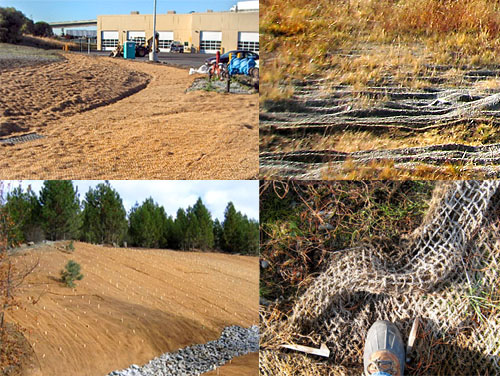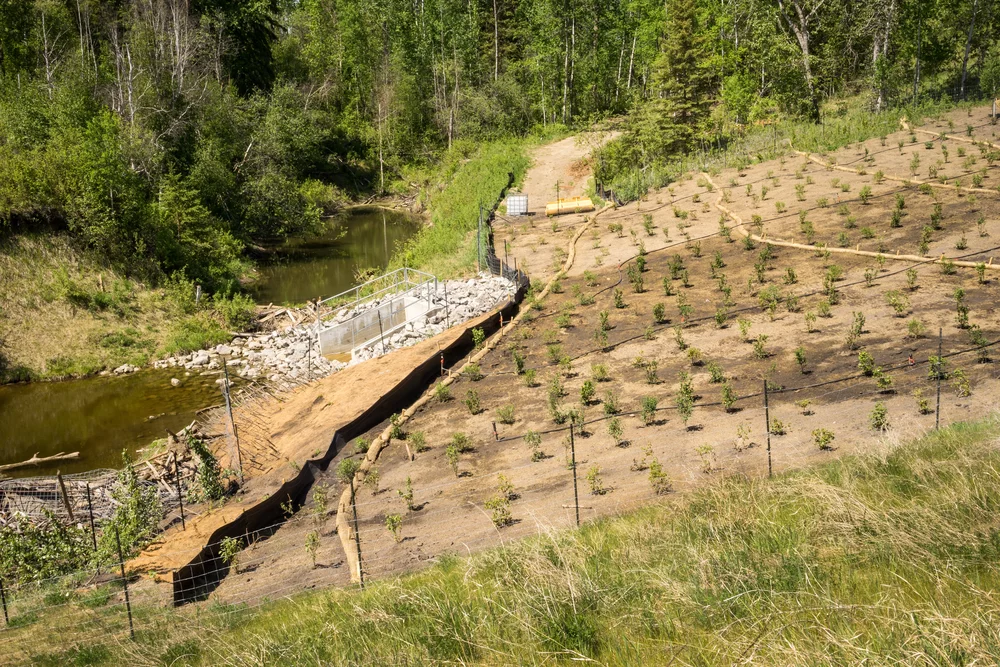Reliable Erosion Control Methods for Sustainable Land Management
Are you seeking ways to successfully manage erosion on your land? Look no further! This article will certainly offer you with important details on the value of disintegration control in sustainable land administration. Discover the various types of disintegration and their influence on your land, along with all-natural techniques to regulate erosion. Find out exactly how to execute effective disintegration control procedures and ensure proper surveillance and upkeep. Begin taking action today to secure and maintain your beneficial land.
Value of Disintegration Control in Lasting Land Monitoring
Disintegration control is necessary for sustainable land monitoring because it aids stop soil deterioration and loss. By carrying out effective erosion control techniques, you can make certain the long-lasting wellness and productivity of your land. Without correct erosion control measures, soil disintegration can happen, bring about the loss of beneficial topsoil that is abundant in nutrients needed for plant growth.
One of the major factors erosion control is crucial is since it helps to preserve soil fertility. In addition, erosion can lead to sedimentation in nearby water bodies, which can negatively influence water ecological communities.
One more secret advantage of disintegration control is the avoidance of land deterioration. Erosion can trigger the loss of important topsoil, which takes years to create normally. This loss of topsoil can result in unproductive and barren land, making it hard for plants to grow and for communities to thrive. By carrying out erosion control techniques such as terracing, contour plowing, and the usage of cover crops, you can help stop land degradation and preserve the wellness of your land.

Sorts Of Erosion and Their Effect on Land
Comprehending the numerous types of disintegration and just how they influence the land can help you apply far better land administration practices. Erosion is the procedure by which dirt, rocks, and various other materials are slowly put on away and transferred by all-natural pressures such as ice, water, and wind. There are four main types of erosion: sheet disintegration, rill disintegration, gully disintegration, and mass movement erosion.
Sheet erosion occurs when a slim layer of dirt is eliminated evenly from the surface of the land. This type of disintegration is typically caused by heavy rains or incorrect land monitoring practices such as overgrazing or logging. Rill disintegration, on the other hand, takes place when tiny networks or rivulets are based on the land due to the circulation of water. This can take place on high slopes or areas with compacted soil.
Gully erosion is more serious and happens when larger gullies or networks are formed due to the continual flow of water. Mass motion disintegration refers to the motion of big quantities of dirt and rocks downhill due to the force of gravity.
Understanding these different types of disintegration and their influence on the land is critical for reliable land monitoring. By carrying out disintegration control strategies such as terracing, shape plowing, and reforestation, you can lessen disintegration and protect the stability of the land. Additionally, practicing good land monitoring methods like appropriate plant turning, preserving ground cover, and making use of debris control measures can further help in protecting against erosion.
Natural Erosion Control Techniques for Lasting Land Administration
By carrying out natural erosion control techniques, you can properly preserve the integrity and manage of your land. One efficient method is making use of vegetation, such as lawns and plants, to support dirt and avoid disintegration. Planting indigenous varieties can aid enhance origin thickness and bind the dirt with each other, reducing the danger of erosion triggered by hefty rains or wind (erosion control). In addition, mulching is one more all-natural technique that can help manage erosion. By applying a layer of natural mulch, such as wood chips or straw, you can secure the soil from the More about the author effect of raindrops, decreasing soil compaction and runoff. An additional all-natural erosion control technique is contouring the land. By developing contour lines or balconies on inclines, you can decrease the flow of water and enable it to pass through the soil, decreasing erosion. In locations where disintegration is a significant problem, mounting disintegration control coverings or mats can be beneficial. These mats are constructed from biodegradable materials and assist stabilize the soil up until vegetation is developed. On the whole, by making use of these all-natural erosion control approaches, you can efficiently manage and safeguard your land from erosion, ensuring its long-term sustainability.
Implementing Effective Disintegration Control Measures

To successfully handle and protect your land from disintegration, you ought to take into consideration carrying out proven approaches that can help reduce the risk. One such technique is making use of disintegration control coverings. These blankets, made from synthetic materials or natural fibers, are positioned on the soil surface to support it and protect against disintegration. They assist maintain moisture, minimize sediment overflow, and promote the growth of greenery. Another efficient technique is the usage of terracing. Terracing entails producing degree systems on sloping land, which aids to decrease runoff and prevent erosion. It also permits for the growing of crops on the terraced slopes. Furthermore, planting greenery is an important action in disintegration control. Trees, yards, and hedges have substantial root systems that bind the dirt with each other, reducing erosion brought on by wind and water. Installing sediment control measures such as silt fencings and debris ponds can assist catch debris and prevent it from getting in close-by water bodies. These actions are particularly vital throughout building and construction activities. By applying these confirmed erosion control approaches, you can efficiently shield your land and decrease the threat of erosion and its damaging effects.
Tracking and Upkeep of Disintegration Control Techniques
When surveillance and preserving disintegration control steps, it is essential to on a regular basis examine the disintegration control blankets, balconies, plant life, and debris control measures to ensure they are functioning properly and efficiently protecting against erosion (silt fences). official website By performing normal inspections, you can determine i thought about this any kind of concerns or deficiencies in the disintegration control strategies and take necessary activities to fix them
Begin by inspecting the erosion control blankets. Look for indications of damages or wear, such as splits or exposed soil.
Examine for indicators of erosion, such as sediment accumulation or uneven surfaces. Make sure that the terraces are correctly made and preserved to divert water flow and reduce erosion.
Assess the plants in the disintegration control area. Make certain that it is healthy and balanced and properly covers the dirt. Look for any type of indications of plant stress or illness, and resolve them quickly. Correct plants protection aids support the dirt and avoid disintegration.
Lastly, evaluate the debris control actions, such as sediment basins or sediment fencings. Make sure they are appropriately mounted and working as planned. Get rid of any gathered debris and make sure that the controls are appropriately preserved.
Normal surveillance and maintenance of disintegration control procedures are vital for their lasting effectiveness in avoiding erosion and keeping lasting land monitoring practices.
Final Thought
Finally, you ought to prioritize erosion control for sustainable land administration. By understanding the various sorts of erosion and their influence on the land, you can apply effective all-natural erosion control techniques. It is very important to routinely keep an eye on and maintain these techniques to guarantee their long-lasting effectiveness. By acting and applying these measures, you can help protect the land from erosion and advertise lasting land management techniques. Don't wait to make erosion control a concern for a much healthier and more lasting future.
Discover the different types of erosion and their impact on your land, as well as all-natural approaches to regulate disintegration. There are four major kinds of disintegration: sheet disintegration, rill erosion, gully disintegration, and mass movement erosion.
By executing disintegration control strategies such as terracing, shape plowing, and reforestation, you can decrease disintegration and maintain the honesty of the land (Memphis Erosion Control Solutions hydroseeding). In general, by making use of these natural erosion control techniques, you can properly handle and secure your land from erosion, ensuring its long-lasting sustainability
By comprehending the different kinds of disintegration and their effect on the land, you can implement efficient natural erosion control approaches.